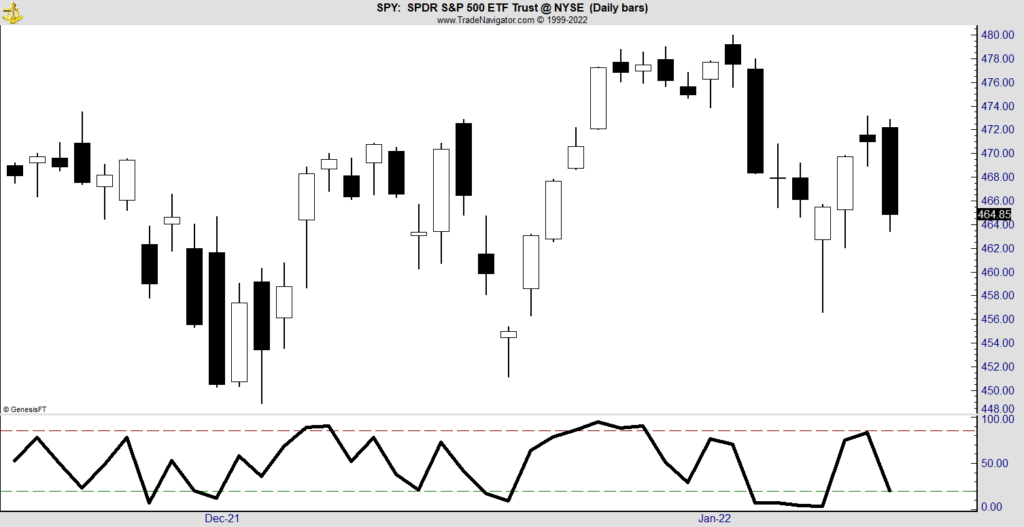Stocks are off to a rocky start this year.
The general trend points down. While that can be discouraging, it’s important to recognize that down markets tend to be volatile. The upside of volatility is that there are short-term trading opportunities.
Trading is different from investing. It requires a different outlook. Think about it like this:
- Investors think about companies.
- Traders think about stocks.
Traders focus on how the next few days look, rather than considering what the company’s earnings will look like in the next quarter.
That requires different tools.
Instead of financial statements, traders look at charts and indicators. To limit risk, many traders use exchange-traded funds (ETFs). As a basket of stocks, an ETF carries less risk than individual stocks. With a focus on the short term, it’s always important to consider risks.
RSI as a Short-term Indicator
Indicators are ideal for the short term.
Many traders use indicators like a 200-day moving average. But that is a long-term timing tool. Most technical indicators are designed for the long term. Popular momentum tools like stochastics and the relative strength index (RSI) require at least two weeks of data. In the current market, that’s a long time.
RSI can be adapted to the short term. Instead of calculating the indicator with 14 days of data, you can calculate it with two. This is shown at the bottom of chart of SPDR S&P 500 ETF (NYSE: SPY).
SPDR ETF 2-Day RSI

This indicator frequently moves between extremes and allows for short-term trades — buying when it rises above the green line and selling when it falls below the red line, for example.
Unfortunately, the indicator won’t always give a sell signal, so it’s best to have a backup selling strategy. Maybe selling two days after the buy signal could work for you.
Not everyone wants to be a short-term trader. But a few such trades could help protect wealth in turbulent times.
Michael Carr is the editor of True Options Masters, One Trade, Peak Velocity Trader and Precision Profits. He teaches technical analysis and quantitative technical analysis at the New York Institute of Finance. Follow him on Twitter @MichaelCarrGuru.
Click here to join True Options Masters.





